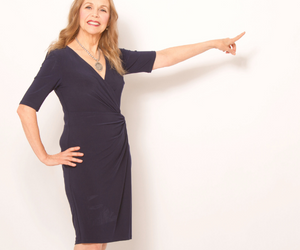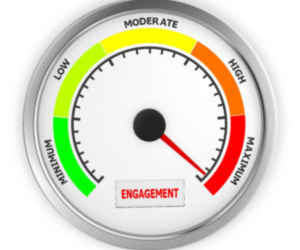The World’s Reference Library for Minerals
What is the most widely viewed museum object in the world?
The answer is, the Smithsonian’s Hope Diamond.
If you’re one of the roughly 30 million people who will be visiting the Smithsonian Institution in Washington, D.C. during the Institution’s 150th Anniversary celebration, be sure to see the Hope Diamond. It’s located on the second floor of the National Museum of Natural History.
When you see the Hope Diamond, you’re looking at one of the rarest and most precious gems on earth. If no one has prepared you for it, you’d probably expect a large, sparkling colorless stone. True, the Hope Diamond is large but the diamond itself is a glittering violet-blue. There’s a radiance to it so lovely that you can understand why kings, like Louis XIV of France and George IV of England, treasured the gem.
The Hope Diamond is just one small part of the Smithsonian’s gem and mineral collection. Since the Smithsonian’s mission is “the increase and diffusion of knowledge,” there’s more to the Smithsonian’s collection than just this astonishingly beautiful gem.
The Hope Diamond is actually a mineral, and behind the scenes at the Smithsonian is the world’s preeminent mineral collection. The collection includes samples of each of the world’s more than 4000 known minerals. Minerals often come in different forms, so there are samples of many known varieties of the individual minerals.
The World’s Reference Library for Minerals
The scale of the collection is impressive. To visualize the museum’s collection of just one of these minerals, quartz , imagine a drawer from your dresser. Then imagine that your dresser is 18 drawers high and 7 drawers wide. Each of those drawers might contain 20 to 50 different varieties of quartz.
The collection contains, to the best of our current knowledge, all the varieties of quartz from the entire world. The collection is available to scholars from throughout the world. It is, in the words of Randall Kremer, a Smithsonian spokesman, “The World’s Reference Library for Minerals.”
Scholars can borrow samples or can request minute shavings for study and experimentation.
The minerals are available at no charge, but the Smithsonian nevertheless gets something priceless in return. Each scholar or scientist who uses Smithsonian specimens is asked to share their results with the Smithsonian. In this way, the Smithsonian has become one of the world’s most outstanding repositories of information on minerals
It’s a good deal for the Smithsonian and for this country as well because it means an ever-expanding knowledge base about minerals. The implications of this are almost beyond imagination. To get a glimpse of the importance of minerals, look at a city skyline, and consider that most of the raw materials for all the buildings you see come from minerals. Whether it’s the steel in the girders, or the silicon in the glass windows, or the cement foundations, it’s minerals that make up the buildings.
Or think of an automobile. Almost everything in it, from the iron and steel and aluminum in the body, to the tungsten in the headlights or the copper in the wiring, comes from minerals. Minerals are a basic natural resource and the more we know about them, the more wisely we can use them.
The Hope Diamond may be the showiest of the minerals, but in the view of Linda Welzenbach, one of the Smithsonian’s geologists, “all minerals matter.”
Search Blogs
Latest Posts
Tessa Adams’ Journey to Create a Safe, Supportive Online Community for Mental Health
https://foreignpress.org/journalism-resources/tessa-adams-journey-to-create-a-safe-supportive-online-community-for-mental-health Publication –foreignpress.org
Arming Ukrainian Soldiers with Poetry and Humor
https://foreignpress.org/journalism-resources/arming-ukrainian-soldiers-with-poetry-and-humor Publication –foreignpress.org
How Putin’s Ally Saved Millions of Bottles of Great Wine—For Himself
https://foreignpress.org/journalism-resources/how-putins-ally-saved-millions-of-bottles-of-great-winefor-himself Publication –foreignpress.org
A Ukrainian Policewoman Experiences the Human Side of a Rocket Attack
https://foreignpress.org/journalism-resources/a-ukrainian-policewoman-experiences-the-human-side-of-a-rocket-attack Publication –foreignpress.org
Subscribe to Updates
About Author

Mitzi Perdue is the widow of the poultry magnate, Frank Perdue. She’s the author of How To Make Your Family Business Last and 52 Tips to Combat Human Trafficking. Contact her at www.MitziPerdue.com
All Articles
One Good Idea Can Change Your Life
One Good Idea Can Change Your LifeA brief story about Ernest Henderson Do what it takes to find good ideas. The reason? One good idea can change your life. And lots of good ideas can lead to undreamed of success! Let me explain why I say this by sharing a brief story...
Be the Person Others Want to Do Business With: Be fair
Be the Person Others Want to Do Business With: Be fairThe Beginnings of the Sheraton Hotel The international Sheraton Hotel Chain grew from an investment of just $1000. My father, his brother, and his college roommate received war bonuses after their military service...
Heart Disease In Women: It’s Different
Heart Disease In Women: It’s DifferentHEART DISEASE IS A WOMAN’S DISEASE In the 1950s, we all thought heart disease was a man’s disease. However, more women are dying of heart disease than men. Also, even though the mortality rates for both men and women are...
Prevent Nightmare House of Horrors: Family Business Quarrel, Part 2
Prevent Nightmare House of Horrors: Family Business Quarrel, Part 2 To prevent a Family Business Quarrel 1. Create a culture emphasizing that family members are part of something bigger than themselves. Being too self-centered is a danger in a family business....
Preventing Nightmare House of Horrors, a Family Quarrel, Part 1
Preventing Nightmare House of Horrors, a Family Quarrel, Part 1Since you’re here reading this, the subject probably hits close to home. If so, you have my entire sympathy. If ever there’s a high stakes situation, it’s the family quarrel in a family business. I’ve had...
Four Things Frank Perdue Did to Encourage Employee Engagement
Four Things Frank Perdue Did to Encourage Employee Engagement Employee engagement is one of the most important – possibly the most important factor in an organization’s success. When I look at how Frank Perdue (my late husband) built his chicken company from a...




